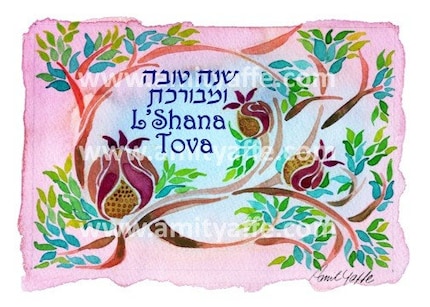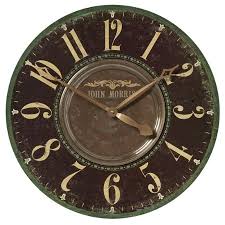
Leviticus 23:23 Then the LORD spoke to Moses, saying, 24 “Speak to the children of Israel, saying: ‘In the seventh month, on the first day of the month, you shall have a sabbath-rest, a memorial of blowing of trumpets, a holy convocation. 25 You shall do no customary work on it; and you shall offer an offering made by fire to the LORD.’” (New King James Version).
According to the Hebrew calendar the 7th month is commonly known as Tishrei & this year the first of Tishrei falls on the 8th of September; as with all Hebraic holidays, it will begin at sundown.
Rosh Hoshanah is a time of celebration, eating, fellowship and trumpet blasting; the trumpets we're talking about are not the brassy ones found in big band ensembles, but ancient trumpets made of a ram's horn--a shofar. These horns have been used for thousands of years for many reasons, most often in battle. The walls of Jericho fell to the blaring squeals of the shofar. The triumphant noise a shofar can make by a trained trumpeter can be chilling and during a Rosh Hoshanah service or celebration there are 4 different calls that remind listeners of the battles fought, wars waged and lives lost.
For more on the shofar and the 4 sounds made during Rosh Hoshanah visit here.
The Hebrew Calendar is a lunar calendar. The beginnings of each month are determined by the spotting of the new moons, for this reason the celebration of Rosh Hoshanah on the 1st of the month is difficult to determine for certain. Thanks to the Rabbis, the modern Hebrew calendar is set in advance--coming as close the new moon cycles as can be predicted, in order that dates for holidays can be predetermined. In an agrarian and ancient Hebrew society the months could vary in length depending on the cycles of the moon, and they would be on watch for these lunar cycles to know the patterns of their years.
 Rosh Hoshanah represents an announcement. The shofar blasts are as a calling to the people to be alert and prepare. Following Rosh Hoshanah is Yom Kippur--'the day of atonement', a time of reflection, fasting and repentance. Traditions like Tashlich help people prepare for Yom Kippur; by throwing bread crumbs into a river or creek on Rosh Hoshanah, the sins and regrets of the last year are meant to be let go and a new promise is made to be better through the next year. It is a time of purging so that true introspection can soon take place.
Rosh Hoshanah represents an announcement. The shofar blasts are as a calling to the people to be alert and prepare. Following Rosh Hoshanah is Yom Kippur--'the day of atonement', a time of reflection, fasting and repentance. Traditions like Tashlich help people prepare for Yom Kippur; by throwing bread crumbs into a river or creek on Rosh Hoshanah, the sins and regrets of the last year are meant to be let go and a new promise is made to be better through the next year. It is a time of purging so that true introspection can soon take place.Traditions:
- Tashlich (a prayer)--to purge this year's bad deeds
- Dipping apples in honey--to represent a sweet new year
- Round Challah (recipe & how-to)--represents the 'crown' of the year and is usually adorned with raisins for an added bit of sweetness
- Honey Cakes (recipe)--more sweetness
- Apples in all forms--having to do with the harvests that are coming and the sweetness also.
- Greeting: (practice your Hebrew!)
- L'shanah tova tikatevu v'tichatemu (Hebrew)--May you be inscribed and sealed for a good year
- Or shortened to L’shana tova (Hebrew)--A good year
- Shanah Tovah U’metuka (Hebrew)--A good and sweet year
Extras:
Biblical Holidays Book
Martha does Rosh Hashanah
Shofar Making Craft
Kids Activities
Fun Honey Video (but get your honey from a local supplier if possible ;) )
Homework for you:
1. No matter your creed, letting go of matters that weigh us down is important and participating in Tashlich this way can bring a real feeling of release. Don't you need to let go of something that has been on your shoulders?
2. make some honey cake! You won't regret it. As the seasons change honey cake is a warm welcome to the coming Autumn. Search the many recipes online & pick one that suits you. Share your pictures with us at the Life as a Schoolhouse Flickr group.
3. Look for a local Chabad group, temple or Rosh Hashanah observers that welcome the community to their services. We're fortunate to have a local group that has loads of family friendly activities to celebrate all the High Holy days in the next few months, maybe you are too.
ADDITIONAL EXTRAS: President Obama
And a beautiful 'teaching'.
Martha does Rosh Hashanah
Shofar Making Craft
Kids Activities
Fun Honey Video (but get your honey from a local supplier if possible ;) )
Yearly we celebrate Rosh Hashanah with a trip to Boone, NC (where Drew & I met). There we visit our favorite park along the Blue Ridge Parkway and hike to a secluded part of the creek that runs through it and do the Tashlich tradition. After this we enjoy what is generally beautiful weather this time of year with a picnic including homemade honey cake spread with apple butter. As a family we continue to come up with new and fun traditions that help us maintain a sense of stability and also encourage our understanding of our faith in a physical way. This year that will mean more rosh hashanah crafts like this crown of leaves and these apple greeting cards.
Homework for you:
1. No matter your creed, letting go of matters that weigh us down is important and participating in Tashlich this way can bring a real feeling of release. Don't you need to let go of something that has been on your shoulders?
2. make some honey cake! You won't regret it. As the seasons change honey cake is a warm welcome to the coming Autumn. Search the many recipes online & pick one that suits you. Share your pictures with us at the Life as a Schoolhouse Flickr group.
3. Look for a local Chabad group, temple or Rosh Hashanah observers that welcome the community to their services. We're fortunate to have a local group that has loads of family friendly activities to celebrate all the High Holy days in the next few months, maybe you are too.
ADDITIONAL EXTRAS: President Obama
And a beautiful 'teaching'.




